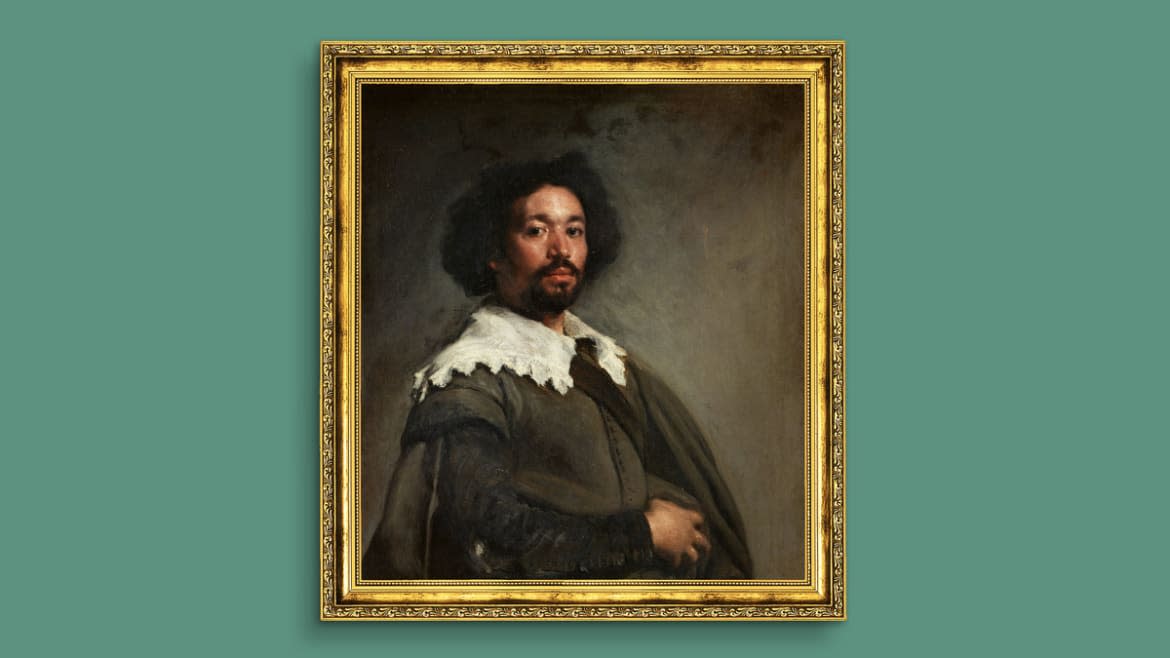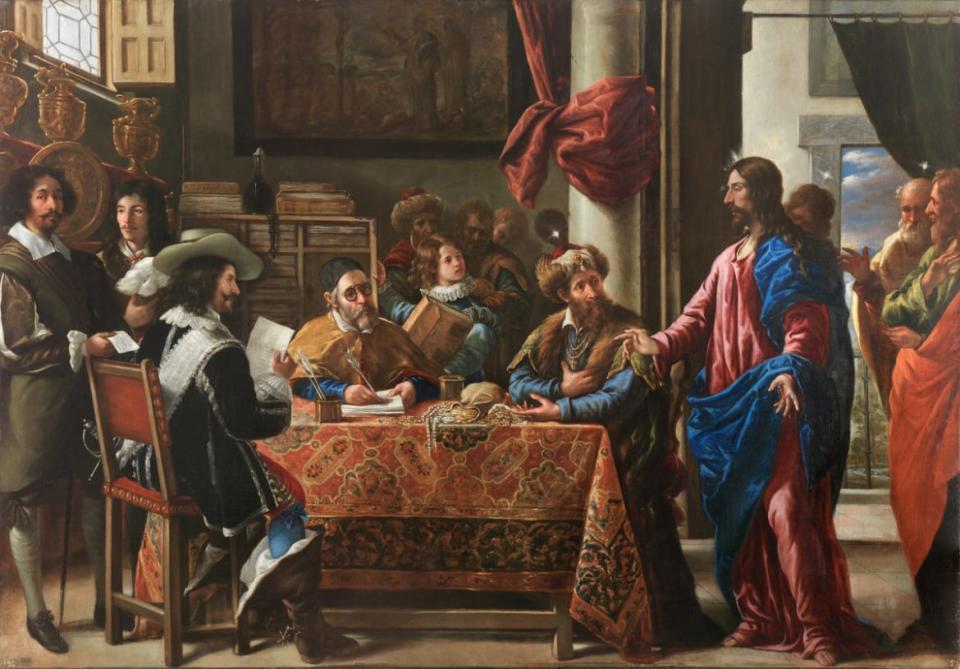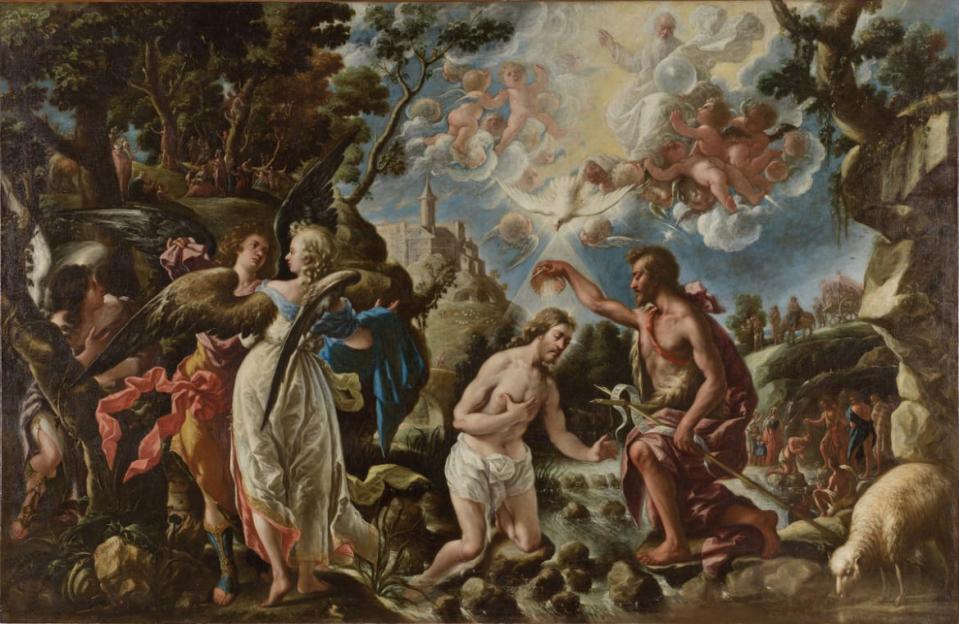Juan de Pareja Was Velázquez’ Slave. Then He Became a Star

- Oops!Something went wrong.Please try again later.
- Oops!Something went wrong.Please try again later.
The mysterious gaze behind an iconic 17th-century portrait of a fair-skinned Black man has consistently stumped art enthusiasts. Robed in a dark gown with a white collar, he sits regally but delivers a melancholic look toward the artist. His demeanor at first glance is admirable, though a deeper observation suggests his body language is slightly forced.
It will never be clear what Juan de Pareja was thinking as he sat for Spanish painter Diego Velázquez, who was also his enslaver. Pareja worked under Velázquez during a period when many artists utilized those they enslaved for menial tasks, like mixing pigments and other jobs to assist the painters carry out the visions of their work. However, Pareja had an edge, essentially acting as Velázquez’ apprentice and gaining knowledge of a craft in which he became an established artist in his own right.
The Met Museum Asks: How Can Black-Themed Art Be Freed from the White Gaze?
A new exhibition at New York City’s Metropolitan Museum of Art, Juan de Pareja, Afro-Hispanic Painter (to July 16), features the notable portrait by Velázquez as a focal point. However, the viewer has to navigate the identity of a Black man in a Spain where the racial climate was at a beginning stage of being oppressive to anyone designated as “other.”
During the boom of the New Negro Movement in 1920s Harlem, Afro-Latino scholar Arturo Schomburg set the wave for Black history in motion as he developed what would eventually become the Schomburg Center for Research in Black Culture, part of the New York Public Library system. As a child of the Spanish colony Puerto Rico, Schomburg had a personal mission to dig into the story of Pareja, which helped reignite the painter’s artistry into the 20th century and beyond.
The exhibition starts with Schomburg’s exploration of Pareja. Documents and photographs from the historian’s voyage to Spain encompass an effort to reawaken the spirit of Pareja, to understand him from modern and antiquated perspectives as a Black man in predominantly white spaces. Schomburg nearly walked in Pareja’s footsteps, traveling within the painter’s old village as if they were kindred spirits, connected by Spain as their enslaver. Those travels indicated that Blackness in 17th-century Europe was not a totally foreign concept.
Co-curators David Pullins and Vanessa Valdés found it pertinent to illustrate Pareja’s Spanish culture, as he simultaneously lived an alternate consciousness as a Black man.
“For many people, the story of that multiracial society and enslavement in the bounds of Europe, on the Spanish peninsula, was itself something to really lock into,” Pullins told The Daily Beast, noting Pareja’s privilege due to his servitude under Velázquez.
“What’s interesting is he’s moving around, literally is living with Velázquez…and his access to power is amazingly high. And yet, he is enslaved by Velázquez,” Pullins said. “Velázquez is moving at the highest levels of society… I would say [Pareja] must have seen himself as pretty elevated within society.”

'The Calling of Saint Matthew' (1661).
Leaving the room of Schomburg’s travels, the exhibit continues along a hallway with paintings decorating both sides, showcasing the social climate of Seville, Spain, during Pareja’s time. Despite it being a heterogeneous society, minority populations were still deemed as outsiders and expected to assimilate. This is evident in other paintings of the exhibit, like the Battle between Christians and Muslims at El Sotillo by Francisco de Zurbarán. Only Catholic soldiers were highlighted enough to be seen in battle, while a pale-skinned, blond-haired Mary and Jesus view the scene from above in the clouds.
“There's a very clear difference within Spanish society… a very clear difference between Northern Africa and Sub-Saharan Africa,” Valdés explained. “And darkness of skin color indicates Sub-Saharan Africa, versus lightness of tones or gradations of tones.”
Catholicism was synonymous with Euro-Spanish purity. Muslim migrants from North Africa were expected to convert, but even those converts were not seen as equals. Eventually, a religious hierarchy transcended into a colorism spectrum that perpetuated a process of “whitening.”
“In the context of conversion and baptism, you get this whitening effect…the idea that when baptized, certain people miraculously turned white,” Pullins said.
Traveling through the hall of Spanish Catholic dominance, the exhibit winds into another room showcasing the work of Velázquez. Mainly portraits commissioned by political leaders of the time, the room circles with the bust of Pareja as the principal painting. In the same room, we find the hefty document that contains Pareja’s emancipation papers from Velázquez.
Finally, we reach Pareja’s work: massive, illustrious paintings, rich in color and heavy in religious purification.
The Calling of Saint Matthew is one of two paintings in the exhibit in which Pareja constructs a self-portrait. Surrounded by three apostles, Jesus Christ negotiates with a Jewish tax collector, decked out in furs and jewels. Servants and others congregate in the room, and a version of Pareja stands to the far left. Appearing lighter with slightly more European features than the Velázquez portrait, Pareja breaks the fourth wall as if he’s signaling a secret to the viewer.
If the viewer did not know his identity, they would perhaps think of him as any other white man in the group. A Black man of a darker complexion is also in the painting, but situated toward the back with a featureless face and flat shading in his tone—a pattern Pareja shared with other artists at the time to keep the tones of darker figures more simple.
“[Pareja] was probably always known as the former slave of Velázquez. One interpretation of his paintings is, particularly his later ones, his grander ones, is a direct response,” Valdés told The Daily Beast.
The other self-portrait in The Baptism of Christ is more subtle. The complex painting shows multiple variations of John the Baptist washing away people’s sins—including Christ’s; God in the heavens oversees John’s acts, and angels have descended down to Earth to partake in the righteous festivities. In the bottom left corner, Pareja signs his name with the date on a rock, crushing a serpent meant to symbolize evil. Pullins and Valdés equate this act as Pareja noting his indulgence in Catholicism to prove that he has reached a level of social enlightenment and religious assimilation, despite his origins as an enslaved Black person.

'The Baptism of Christ' (1667).
“The crushing [of] the serpent says, ‘I'm extremely Catholic,’” Pullins said, adding that it was Pareja’s attempt to “position himself as very much part of the establishment.”
“That kind of issue around transformation towards whiteness is perhaps part of it,” Pullins explained. “It's quite disturbing as an interpretation, but there's so much scripture around the whitening effects of baptism. It's quite upsetting.”
By the time the viewer reaches these two masterpieces, it’s obvious that Pareja has come to view himself differently from other Afro-Hispanics in 17th-century Spain. He has accepted Christianity and his role in society, which have propelled him to a higher social status.
Regardless of Pareja’s 17th-century proximity to whiteness, Schomburg considered Pareja as “an ancestor of all Black artists in the Americas” (Juan de Pareja: Afro-Hispanic Painter in the Age of Velázquez, 2023).
As viewers, we cannot critique his work with a revisionist view of our current perspectives on race. Instead, we have to understand Pareja’s survival stance for the time in which he lived. With that in mind, he still cleared a path for other African descendants of the slave trade.
“Schomburg hope[d] for Black audiences to recognize this man as a forefather and that all of us inherit his legacy of excellence,” Valdés said. “I think in that aspect, [Pareja] would be proud to be recognized as an artist of that scale.”
Get the Daily Beast's biggest scoops and scandals delivered right to your inbox. Sign up now.
Stay informed and gain unlimited access to the Daily Beast's unmatched reporting. Subscribe now.

